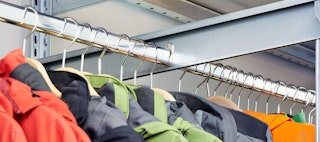Fact & Figures
According to the German Textile and Fashion Association, the German textile and fashion industry is an important economic sector with annual sales of around EUR 32 billion, comprising around 1,400 SMEs with approximately 135,000 employees in Germany. Technical fabrics, which are used in a wide range of high-tech products, are the strongest growth drivers. This sector generates 60 percent of industry sales. The other 40 percent is accounted for by companies in the apparel sector. In the fashion industry, exports play an enormous role with a quota of 40 percent. Fashion retailing, which includes various segments such as men's, women's, children's, sportswear, lingerie, shoes, accessories, etc., has undergone tremendous changes in the last two decades. While small-scale specialty retailers still dominated the market in 2000, vertical retailer brands such as H&M or Zara now dominate the consumer price range between discount and mid-market, according to KPMG. The mono-label stores of manufacturers such as Esprit, s.Oliver and Tom Tailor are experiencing even stronger growth rates in the medium and higher price segments.
Multi-label chain stores such as Peek & Cloppenburg, Breuninger, Wöhrl, Görtz and leading local and regional fashion stores ("top dogs" such as Modehaus Reischmann, Modehaus Jost, etc.) in the specialist fashion retail sector also reported slight overall sales growth rates. According to the KPMG study "Fashion 2025", the 2025 future scenario will see a decline in stationary fashion retail stores, taking into account various models of development. On the whole, however, a broad "desolation of city centres" is not occurring. In order to survive in the online age, brick-and-mortar retail must quickly implement new ideas and invest in positioning concepts as well as an attractive corporate image. Furthermore, online-offline retailing must be networked and processes optimised. Another factor to consider is that over 60 percent of customers now seek contact via smartphone or tablet. It is therefore essential that internet platforms are optimised for mobile use and/or that online stores create their own app.
Trends
- Fast fashion versus sustainability
- Demographic influence: Fashion-conscious seniors
- Continued trend towards verticalisation among fashion companies
- The Corona crisis accelerates the trend of shifting trade in the fashion industry to the Internet
- New e-commerce era: Increasing mobile commerce via smartphone, selective shopping, online-offline networking, cross-channel services, click & collect (buy online and pick up in store).
- Backward integrated vertical retailer brands such as H&M and Zara and forward integrated stationary mono-label stores of manufacturers such as Esprit, s.Oliver and Tom Tailor are occupying ever larger parts of the fashion market. At the same time, the proportion of multi-label specialty retailers offering a wide range of fashion brands is declining.
Logistics requirements
The textile and fashion industry is characterised by short product life cycles, large seasonal fluctuations and high dynamics along the supply chain. Fashion as a sensitive commodity requires careful handling, especially in logistics. In addition, more and more apparel is being sold online or through cross-channel marketing. This means that logistics and intralogistics must be geared in particular to the fast e-commerce business in the fashion industry. Optimised intralogistics solutions are essential.
BITO shelving, pallet racking as well as multi-tier systems are ideal solutions in the textile and fashion industry. Multi-tier shelving is particularly efficient as it improves space utilisation and enables faster order picking by providing a better overview and direct access to all items. Integrated elevators provide even better and faster access to the goods. Customer satisfaction increases noticeably as a result of faster picking and order shipping. Staff are also relieved by the reduction of walking distances and improved ergonomics at their workstations.
Shelving from BITO has no sharp corners and edges, thus preventing injuries during picking and avoiding damage to high-quality garments. The shelving units are easy to assemble and shelf spacing is easy to adjust. Different shelf lengths and depths make it easy to adapt shelving to the size of the storeroom and the items to be stored. BITO shelving has been designed to be visually appealing for furnishing sales areas. In addition, matching bins are also available to carry loads.
Case studies
Have we persuaded you?
We look forward to hearing from you:
QATAR
+974 4012 0700
OMAN
+968 7279 7773
